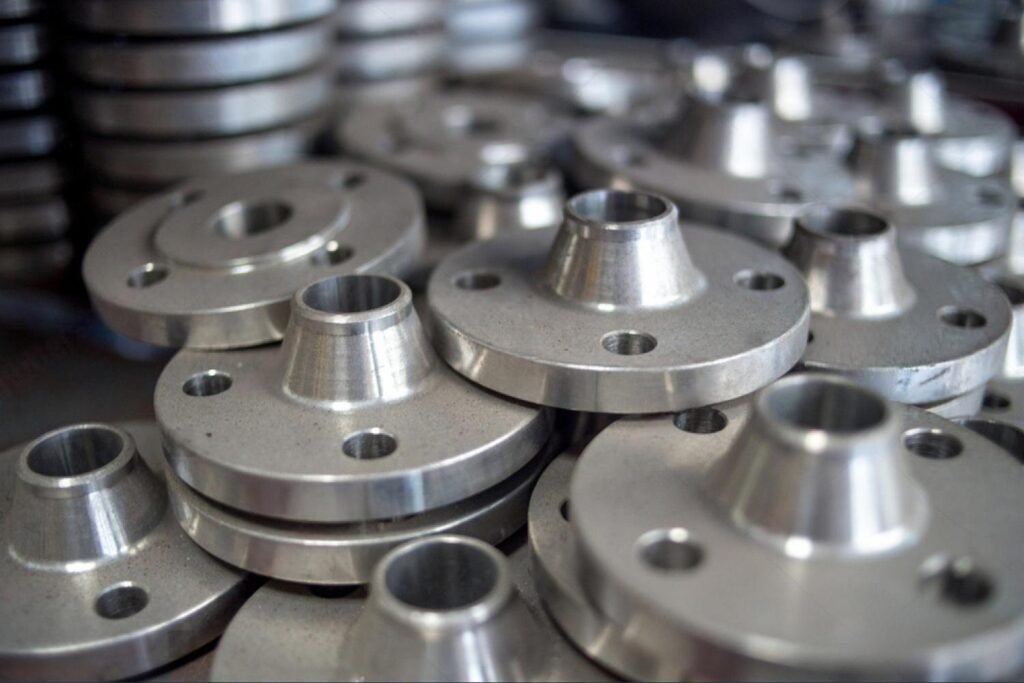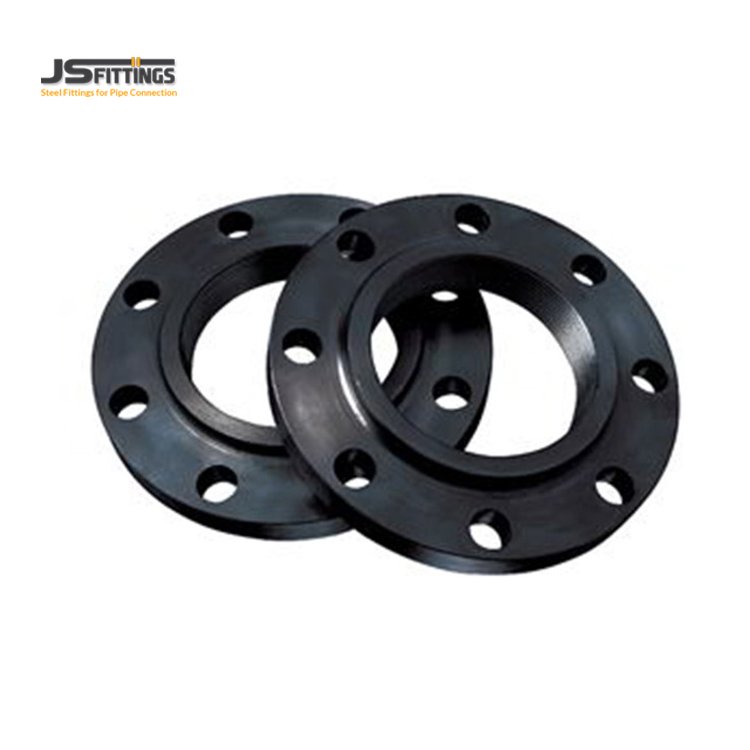When it comes to flanges, choosing the right type is critical for the integrity and performance of piping systems in industries like oil and gas, petrochemicals, and water treatment. Among the many options, two commonly used types are forged flanges and flanges made from steel plates. Both serve similar purposes but differ significantly in their manufacturing processes, properties, and applications. Understanding these differences can help you make an informed choice for your projects.
Manufacturing Processes
Forged Flanges
Forged flanges are produced through a process called forging, where the steel is heated and shaped under pressure to form the desired flange shape. This method aligns the grain structure of the steel, improving its strength and resistance to stress. After forging, flanges are often machined to achieve precise dimensions and a smooth finish.

Plate Flanges
Plate flanges, on the other hand, are cut from steel plates and machined to the required shape and dimensions. This process involves using high-quality steel plates that are tailored for flange production. Unlike forging, the material in plate flanges retains its original grain structure, as no high-pressure shaping takes place during manufacturing.

Material Properties
Forged Flanges
Strength: Forged flanges are exceptionally strong due to the aligned grain structure created during the forging process. This makes them ideal for high-pressure and high-temperature environments.
Durability: They offer excellent resistance to fatigue, impact, and mechanical stress.
Toughness: The forging process improves the toughness of the material, making it less prone to cracking under stress.
Plate Flanges
Uniformity: Plate flanges tend to have more uniform material properties since they are cut fron pre-formed steel plates.
Lower Strength: While they are reliable, they are not as strong as forged flange.
Malleability: plate flanges can be more malleable,making their machining and customization slightly easier,though this comes at the expense of reduced strength.
Types of Flanges
Different flange types cater to various industrial requirements. Both forged and plate flanges are available in the following common types:
Slip-On Flanges
These flanges slide over the pipe and are then welded in place.
Commonly used in low-pressure systems,slip-on flanges are easy to install and less expensive.
Weld Neck Flanges
With a long tapered hub, these flanges offer excellent stress distribution and are suitable for high-pressure and high-temperature applications.
Their robust design makes them a top choice for oil and gas pipelines.
Blind Flanges
These are used to seal the end of a pipe or block off a piping system.
Blind flanges are critical in maintenance and repair tasks as they allow easy system isolation.
Socket Weld Flanges
Designed for smaller pipe diameters,socket weld flanges require only one weld, making them simple to attach.
They ari commonly usde in high-pressure systems with limited space.
Threaded Flanges
These flanges have a threaded bore that connects to pipes without welding.
They are typically used in low-pressure systems and areas where welding is not feasible.
Flange Sizes
Flanges are available in a broad size range to accommodate various pipe diameters and industrial requirements. The typical size ranges for these flanges are as follows:
Pipe Size Compatibility: 1/2 inch to 48 inches (or larger for certain applications).
Pressure Classes:From 150# to 2500#,covering different pressure and temperature requirements.
Thickness Ranges:Varies depending on the flange type and pressure class to ensure strength and durability.
For example, a weld neck flange in a Class 150 pressure rating may have a thinner and smaller profile than a similar flange in Class 2500, which is designed to withstand much higher stresses.
The flange size and pressure rating you choose must align with your project’s specifications for safety and performance.
Applications
Forged Flanges
Forged flanges are typically used in demanding applications that involve extreme conditions. These include:
High-pressure pipelines in oil and gas industries.
Steam systems and other high-temperature environments.
Critical systems in power plants.
Their superior strength and ability to withstand high stresses make them the go-to choice for such scenarios.
Plate Flanges
Plate flanges are more commonly used in less demanding environments. Examples include:
Low-pressure piping systems.
Water transportation and treatement plants.
Industries where cost is a major consideration.
They are suitable for applications where extreme strength and temperature resistance are not reqauired.
Advantages and Disadvantages
Forged Flanges
Advantages:
Superior strength and durability.
Enhanced fatigue and impact resistance.
Excellent for high-stress and high-temperature environments.
Disadvantages:
Higher production costs due to the forging process.
Longer lead times,as the process is more complex.
Plate Flanges
Advantages:
Lower cost, making them economical for less intensive applications.
Faster production time.
Easier to customize for non-critical applications.
Disadvantages:
Less durable and strong compared to forged flanges.
Limited suitability for high-pressure and high-temperature systems.
Which One Should You Choose?
Your choice between forged and plate flanges should depend on the specific requirements of your project. If your system operates under high pressure, high temperature, or other demanding conditions, forged flanges are undoubtedly the better option. However, for systems where cost is a key factor and the requirements are less stringent, plate flanges offer a practical, budget-friendly alternative.
The type and size of flange you select is equally important. Matching the flange type (slip-on, weld neck, etc.) and size (diameter and pressure class) to your system’s specifications can ensure reliability and performance.
At the end of the day, the selection comes down to balancing performance and cost. Partnering with a trusted flange manufacturer can help you identify the best option for your needs while ensuring quality and reliability.
By understanding the nuances between forged and plate flanges, along with their types and sizes, you’ll be better equipped to make the right decision and optimize your system’s performance and efficiency.
#JSFITTINGS #RAYOUNG #STEELPIPE #FLANGE #STEELPIPE #MADEINCHINA #MANUFFACTURER #FACTORY #PIPEELBOW #PIPE REDUCER #INDUSTRYFLANGE
Email: admin@jsfittings.com
Whats App: 008618003119682

